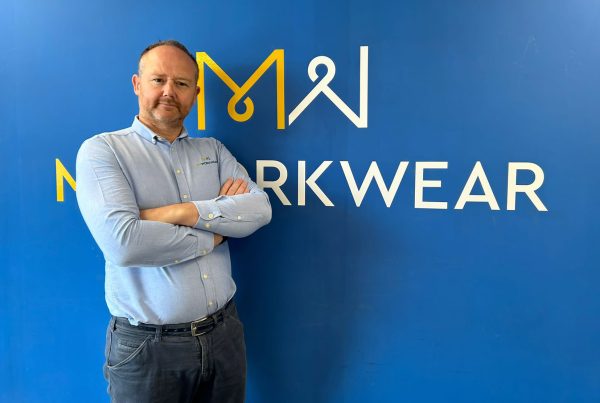Written by Chris Bruce, MD and Co-Founder, Darwin
For some months now employers have been thinking about the buzzwords of the moment � �the new normal�. They must consider which employees will be coming back to work, in what capacity, the frequency with which they�ll do this and what their new roles could be. And they�re not the only ones thinking about these topics � many employees are also reconsidering their relationships with work.
It�s something I spoke about recently with Andy Leaver, Operating Partner at Notion Capital. We talked about the rise of the plural economy; an evolution of the gig economy, where employees increasingly favour a contract-based approach to work, giving them the flexibility to choose when and where they work, even holding multiple roles with different companies at the same time.
In short, HR teams need to be on the front foot to ensure they meet the needs of a blended workforce. To produce a genuinely robust strategy that offers this support, employers must create a roadmap that caters to new and varied ways of working. Here are three key considerations for HR teams:
- Understand how people actually want to work
Amidst new ways of working, it�s likely that, for many employees, they�ll no longer be tied to one place of work. After all, the perks of the plural economy are becoming increasingly attractive to people in all industries and from lower skilled roles to highly specialised skill sets.
As a result, it�s likely that we�ll see people taking up opportunities to work for many companies or moving from one organisation to another on a contract-by-contract basis. What�s more, they won�t be tied to one location.
The same can be said for those who prefer a permanent role too. They may wish to split their time between the office and home or work predominantly from one place. With these new dynamics to consider, HR teams could be faced with a mixed workforce they�ve never had to cater to before.
But it also opens up a whole new pool of talent, if organisations are able to offer the flexibility employees are looking for. To do this, HR teams must truly understand how their employees want to work and monitor this over time to spot changing trends. Regular employee polls combined with market-wide barometers will help teams to not only understand what their current employees are seeking, but see how the wider industry is evolving and what competitors are offering. This will help ensure they�re adopting the right support structures and flexibility policies to attract new talent and keep their best people on board.
- Embrace technology to offer diverse support
Traditional HR systems weren�t developed to factor in mixed workforces on different flexible contracts and work patterns. As a result, they may not be able to deliver what companies are looking for. Many HR teams are currently re-evaluating their tech programmes and tools to ensure they�re appropriate for what the future of work looks like.
To address these challenges, organisations need intelligent systems to manage an employee base that includes permanent, gig, remote, hybrid and office-based workers. The majority of these workers will be legally entitled to benefits but, beyond this, they�ll also have different requirements and want support in different areas.
This requires a robust benefit offering powered by cutting edge technology. From benefits administration software to employee engagement tools and innovative programmes that help to improve an organisation�s diversity and inclusivity, businesses must continue to accelerate their digital transformation and capabilities to cater to new ways of working.
This will make all the difference in attracting new talent. And getting it right not only appeals to those actively on the hunt for a new role, but it could help to pique the interest of �passive workers� � those who are otherwise happy in their roles � unlocking a brand new vein of talent.
Beyond this, HR teams must also find ways to meet the varying needs of their mixed workforce. Benefits pots can be an invaluable tool here, allowing organisations to allocate a set spend per employee, aligned to their people strategy � such as promoting mental wellbeing or encouraging good financial practices. Employees can then choose how they spend their funding, opting for the benefits and rewards that best suit them and align to their own working set up. Not only is this good for employees but it can provide HR teams with a quick and agile way to support and onboard temporary staff or contract-based workers.
- Weave new ways of working into your company culture
But technology can only go so far. Companies that embrace flexible systems and approaches to work must also embrace it culturally. That requires senior leaders, HR teams and boards to lead by example and encourage a truly inclusive working experience that caters to all types of working practises.
If employees (and prospective employees) can see that those in charge are adapting to new ways of working and choosing to do their jobs in a way that better reflects their ideal work / life balance, they will feel more comfortable to do the same.
It�s also essential that companies communicate new approaches and flexible working initiatives to demonstrate that they�re listening to and acting on evolving needs. Ultimately, if employees feel comfortable and supported in choosing to work in new ways that reflect the changing employment landscape, they�re more likely to feel motivated in their roles and loyal to their organisation.
A strategy that grows with you
The time for change is now. Recognising how the working landscape has changed and responding with a flexible and inclusive people strategy will be crucial for businesses as they seek to keep the best people on board. Embracing the power of data and AI-led software will help HR teams to keep a close eye on how they serve their people, adapting and pivoting strategies to respond to emerging trends. In a competitive marketplace, organisations with flexibility woven into their culture, supported by an innovative and agile benefits offering will be in the best position to stay one step ahead, pursue growth and thrive in the post-pandemic landscape.




